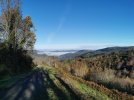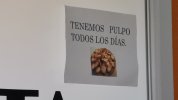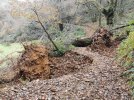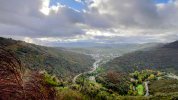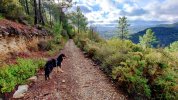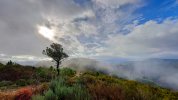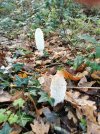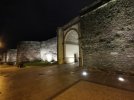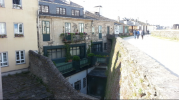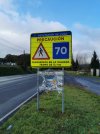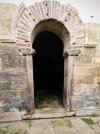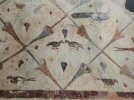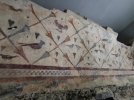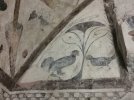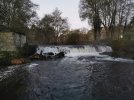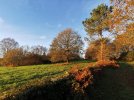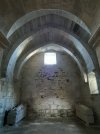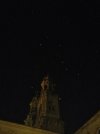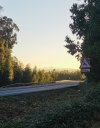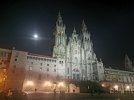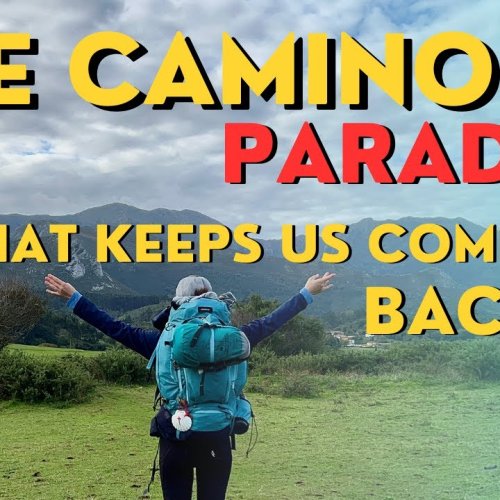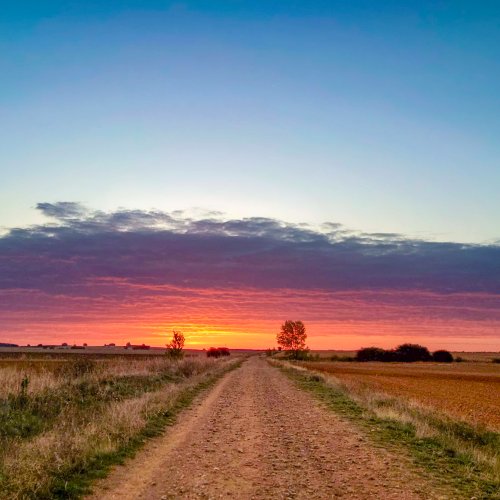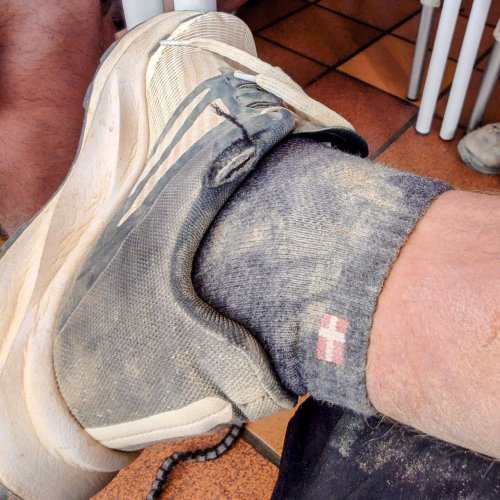alansykes
Veteran Member
- Time of past OR future Camino
- Except the Francés
In the 1490s, a German monk called Hermann Künig walked from Vach to Santiago and back again, recording his trip in 651 verses. After the Codex Calixtinus, it is almost certainly the first guidebook to the Camino, and the first to give details on where to stay, what to eat and which innkeeper might shortchange you. It was hugely successful, going through four editions in a very short time. If Künig is ever canonized, he should quickly become the patron saint of tripadvisor.
Mostly he followed the Camino Francés. However, wanting to avoid the climb up to O Cebreiro, he advises turning right and following the río Valcarse upstream to Pedrafita do Cebreiro, and continuing vía Lugo and then the Camino Primitivo.
Today I followed his footsteps, as well as those of George Borrow in the 1830s. Leaving Villafranca del Bierzo in thick chilly fog, I was surprised by how much of the camino is on tarmac. Occasionally the sunlit uplands were just visible, or a rare shaft of brilliant sunlight would strike the valley floor, with the busy grey green waters of the Valcarce providing a continuous running commentary.
A Jacotrans lorry passed by, and a few other pilgrims appeared along the roadside, although all had their rucksacks. I fell in with a charming Breton lady of about my age, and we walked together to Vega del Valcarce, where she is staying tonight, and where we each had a very nasty bowl of soup. Nasty, but very convivial, and the first person I've broken bread with in over 50 days.
Künig's path leaves the Francés near Las Herrerias, following the river upstream through beautiful thick woods. Occasionally you're forced briefly on to the old N VI highway, but it's blocked at the top for motorway construction, so only locals can use it. Borrow gets a little breathless about this section, writing: "It is impossible to describe this pass or the circumjacent region, which contains some of the most extraordinary scenery in all Spain ... The traveller who ascends it follows for nearly a league the course of the torrent, whose banks are in some places precipitous, and in others slope down to the waters, and are covered with lofty trees, oaks, poplars, and chestnuts. ... Everything here is wild, strange and beautiful."
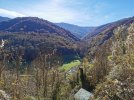
Shortly before the top of the pass, where motorway works are in full swing, you pass into Lugo province in Galicia. My 5th and last autonomous region of this camino, and my 10th and penultimate province. At the entrance to Pedrafita do Cebreiro is a lifesized bronze sculpture of Künig, in pilgrim fig.
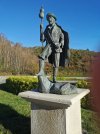
And soon afterwards I was installed in a very comfortable casa rural, Miguiñas do Cebreiro, and provided with a Vía Künig tote bag, a Vía Künig credencial and an excellent leaflet on the Vía Künig.

Mostly he followed the Camino Francés. However, wanting to avoid the climb up to O Cebreiro, he advises turning right and following the río Valcarse upstream to Pedrafita do Cebreiro, and continuing vía Lugo and then the Camino Primitivo.
Today I followed his footsteps, as well as those of George Borrow in the 1830s. Leaving Villafranca del Bierzo in thick chilly fog, I was surprised by how much of the camino is on tarmac. Occasionally the sunlit uplands were just visible, or a rare shaft of brilliant sunlight would strike the valley floor, with the busy grey green waters of the Valcarce providing a continuous running commentary.
A Jacotrans lorry passed by, and a few other pilgrims appeared along the roadside, although all had their rucksacks. I fell in with a charming Breton lady of about my age, and we walked together to Vega del Valcarce, where she is staying tonight, and where we each had a very nasty bowl of soup. Nasty, but very convivial, and the first person I've broken bread with in over 50 days.
Künig's path leaves the Francés near Las Herrerias, following the river upstream through beautiful thick woods. Occasionally you're forced briefly on to the old N VI highway, but it's blocked at the top for motorway construction, so only locals can use it. Borrow gets a little breathless about this section, writing: "It is impossible to describe this pass or the circumjacent region, which contains some of the most extraordinary scenery in all Spain ... The traveller who ascends it follows for nearly a league the course of the torrent, whose banks are in some places precipitous, and in others slope down to the waters, and are covered with lofty trees, oaks, poplars, and chestnuts. ... Everything here is wild, strange and beautiful."

Shortly before the top of the pass, where motorway works are in full swing, you pass into Lugo province in Galicia. My 5th and last autonomous region of this camino, and my 10th and penultimate province. At the entrance to Pedrafita do Cebreiro is a lifesized bronze sculpture of Künig, in pilgrim fig.

And soon afterwards I was installed in a very comfortable casa rural, Miguiñas do Cebreiro, and provided with a Vía Künig tote bag, a Vía Künig credencial and an excellent leaflet on the Vía Künig.

Last edited:






